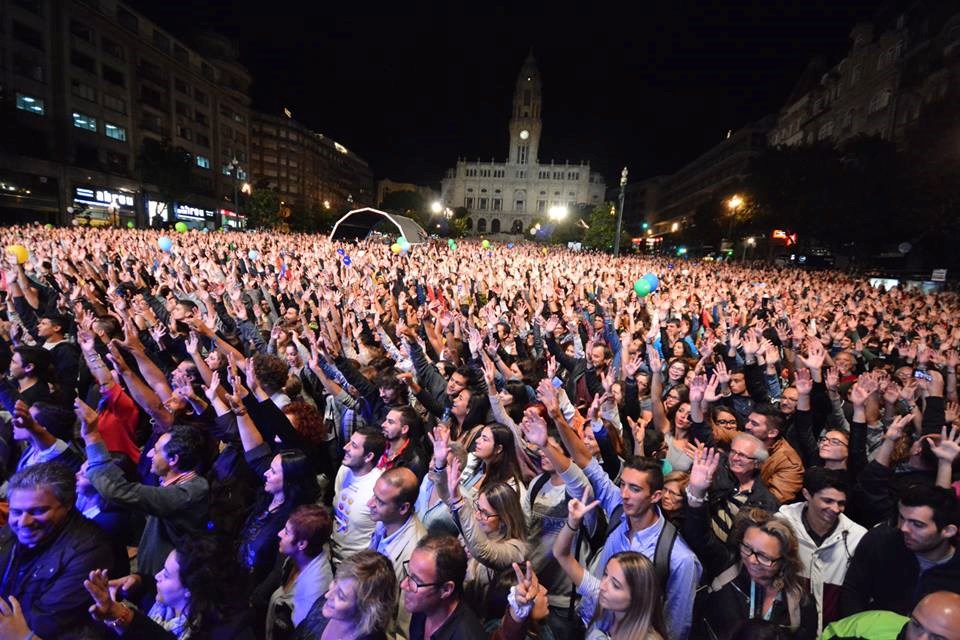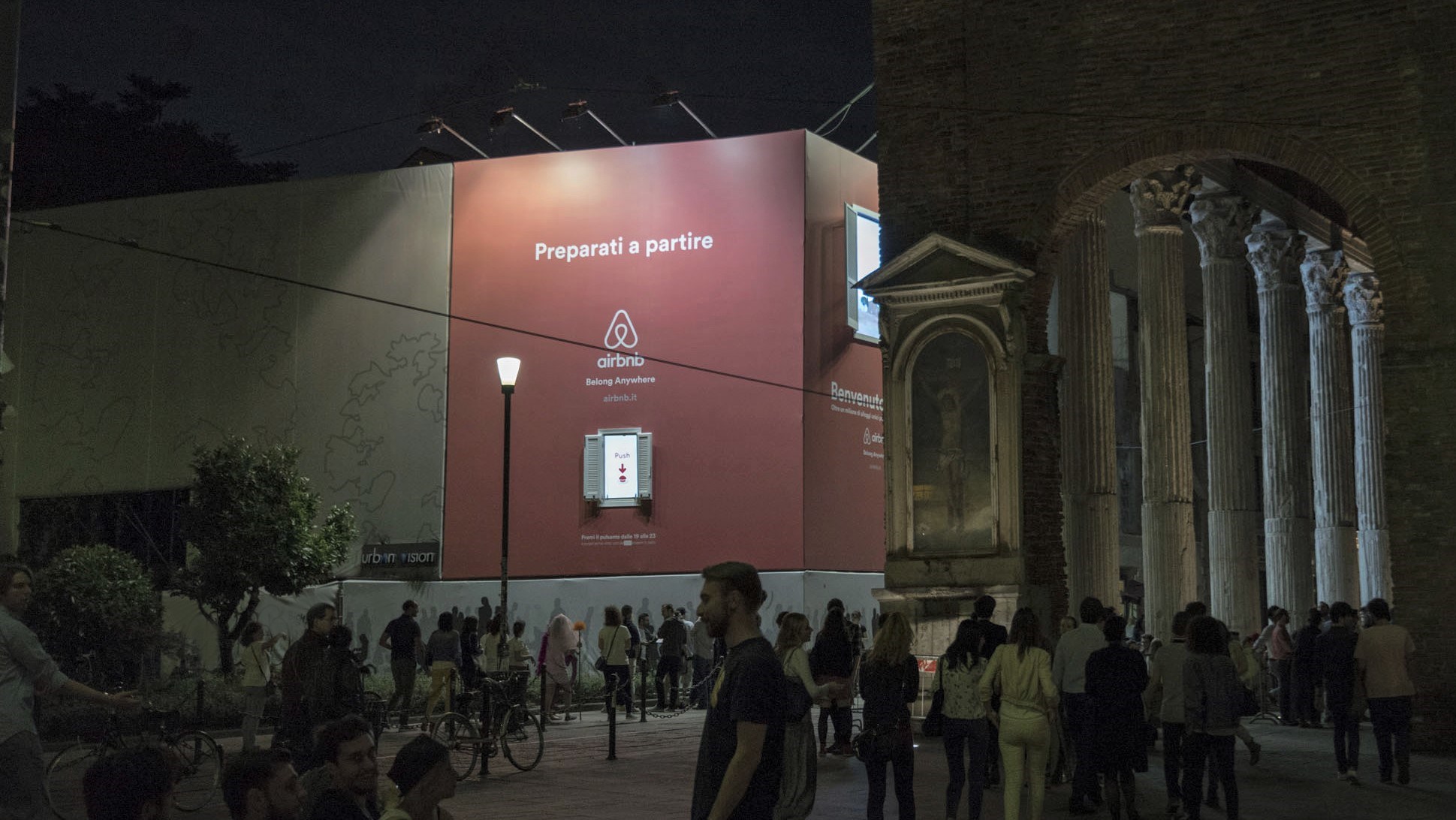CRITIQUE
Urbi et Uber
The city and architecture in the era of neoliberalism
Editor of Punkto Magazine
1.
The recent debate organized by the Jornal dos Arquitectos under the name “Porto (que) Sentido? Urban transformation between identity and artifice” (which took place at the Teatro Rivoli on the 18th of February) arose in the context of an intense and broad discussion around what we could call, paraphrasing Nietzsche, the uses and inconveniences of tourism for the lives of cities. A discussion that has reached both Porto and Lisbon and that has crossed various levels, interlocutors and instances. Activating intrepid supporters of the positive impacts of this activity on the economy and urban rehabilitation, but also a numerous army of critics who, directly or indirectly, have been victims of touristic processes: from the increase of rents due to real estate speculation (and the alteration of renting laws) to the intensive colonization of historical city centres by industries from that sector. However, the general tendency seems to be the attempt to understand tourism as a particular phenomenon, closed unto itself, reduced to its immediate effects and considerably marked by binary oppositions that place tourists versus inhabitants, who tend towards a certain nostalgia and mythification that opposes the new versus the old (an example of this is the debate around the material heritage of cities and, in particularly, concerning so called “historical shops”). In this context, one of the merits of this debate was that it did not succumb to the temptation of placing the word “tourism” in its title, placing itself in a broader scope, in what was identified in the synopsis of the event as “processes of urban transformation” and the “logic of city production”.
To a certain extent, we should regard tourism as an organized, integrated and transversal system that today possesses a preeminent position in national and local economies. In the case of Porto, this is more important in light of the region’s deindustrialization, the gradual disappearance and dislocation of a tertiary sector connected to importing and exporting (which was completely terminated with the European common market) and, finally, the 2008-2011 economic crises which came to intensify all of these processes. Thus, tourism has been a clear national investment, substantially supported by the network of low cost connections and a “cash cow” (to use a reoccurring expression) that allowed, in Porto’s case, for the mobilization of a rhetoric of local pride in times of crisis and of a selection of economic sectors: from real-estate to the restaurant business. Even taking into account all of the external factors that range from the political instability in the Mediterranean to the war in Syria, tourism has not been a completely spontaneous or surprising phenomenon, but rather something that was prepared and established itself naturally in the global arena of strategic economic relations between the north and south of Europe (for example the 2004 investment in the Sá Carneiro Airport, or the construction of the Passenger Terminal of the Leixões Port, with a call launched in 2009 and an investment of 49 million euros and an estimate of 110 thousand passengers per year).
2.
Therefore, it is decisive to understand the relationships between tourism and the city in a broader context. Perhaps it would be better to avoid simply talking about touristification, but rather try to understand if tourism (with all of its characteristics, particularities and excesses) is not, above all else, the expression of a consistent alteration in the way of understanding, conceiving and producing what we still call the city. And thus, understanding tourism or the touristic city as the expression, manifestation and particular variant of what we could call the city in the age of neoliberalism, or the neoliberal city. That is: understanding the way in which the rationality of neoliberal politics (which has gradually become instilled over the last decades) produces a certain type of space and time that stimulates and articulates certain types of social, political and economic relationships.
The other aspect that seems important to underline is that this neoliberal city is constructed from a set of preconceptions that are very different from those that impelled the social-democratic model, which shaped the European city of the second half of the 20th Century. I would go as far as to say that the nostalgic tendency used to criticise tourism is precisely a consequence of this: the loss of a certain idea of the city as an entity that is physically and politically delimited and autonomous, based on a notion of citizenship and the public sphere, which today seems to be completely passé. And that after all, represents the crises of democracy itself: of its institutions, its spaces and its contradictions within the capitalist landscape.
Therefore, I would say that tourism, in the urban setting, is the most evident expression or manifestation of a neoliberal process that is underway and that encompasses the entirety of our lives. And this does not refer to the figurative or metaphorical sense. Neoliberalism is not only a school of thought or simply another expression of capitalism, but rather a political rational, a model of social organization that produces a specific subject, that has its own rules, presuppositions and instances of truthful legitimization: starting with the “markets” 1. And all of this reverberates tremendous impacts and obvious consequences on what have been our ways of existing.
3.
Tourism presents us with a paradigm shift: both in our understanding of the city and in the production of space, and the way we occupy and use that space. And, in fact, tourism seems to benefit from the advantage of making some of these presuppositions more evident. While they are not new, they have become a silent movement (although not linear), defying the notion of city and being-together. Firstly, there is the crisis of a certain notion of public, which in turn is also a crisis of a particular conception of the state (the crisis of the welfare state and the privatization of public services), and on the other hand the crisis of the notion of the public sphere as a space of mediation between the individual and the collective, as well as of political visibility and participation 2. In a sense, these accompany a movement towards the dissolution of the communal, or perhaps the ultimate declaration of the market (and not the public) as the mediating element of the collective. Secondly, the absolute precarious shift of social relationships, linked to a generalized process of economization: the gradual subordination of all spaces of day to day life and urban existence to a logic of profit and the production of value. It is precisely from these concepts that I believe it is useful to briefly detail some of these attributes or characteristics that mobilize that understanding and that production of the city in the neoliberal era.

First. City as brand. Today, cities have become products, merchandise ready to be consumed in the global market of “best European destinations” (Porto’s case is particularly evident with the creation of the “Porto Ponto” brand). And if the city is a brand, that means two things: first, that its structural organization logic is in fact a corporate one, and second, that its inhabitants are considered consumers or human capital (capital gains) and not individuals that can participate in a political process of discussion about the city or in an agnostic encounter/confrontation between parts or parties. In this sense we can say that the “complaints book” is the lawful successor of the political programme.
Second. City as amusement park. Because they are brands, cities need a permanent succession of events capable of providing constant entertainment. Essentially, cities are spaces for entertainment – from movidas to festivities organized by municipal initiatives. This means that public space has become saturated by spectacle. Entertainment is the absolute mediating element of the collective. Without it, there are no people on the street. Here, the notion of consumer/spectator also becomes dominant. Thus, we can say that the neoliberal city is, to a certain extent, the depoliticization of the polis – an urban agglomeration without a politically qualified existence. People who indifferently inhabit a territory without claiming any affinity with political rights. It is a city where public institutions are themselves also debilitated, incapable of managing the conflicts inherent to the processes of urban speculation and of defending the common good (tourism has been an evident manifestation of this).
Third. Uber city. This means two things: absolute monetization of day to day life (all spaces and times of life are transformed into business opportunities and profit) and the transferal of all social relationships into a territory of precariousness. Uber city or airbnb city not only means that precariousness has taken over labour relations, but also that social and urban relations are themselves subjugated to an economic logic. Above all else, the common denominator of these relations is always the “market” 3. In the uber city everyone is an entrepreneur and everyone is in a state of precariousness: all are entreprecarious. Is is the affirmation of an economy that no longer produces, but that is dedicated to producing value. But it is also the affirmation of true interchangeability. If there is a neoliberal subject and body that is malleable, adaptable, multi-tasking, able to accomplish any function or respond to any challenge, then there is also a neoliberal space: flexible, multi-purpose, able to accomplish any function and accommodate diversified/differentiated uses and operations that may maximize its value. In a way, we can say that neoliberalism shatters the traditional trilogy that, for a time, served to characterize a certain paradigm of the city: polis (form of government and political autonomy), civitas (social group and citizenship) and urbs (edifices and infrastructure). For the Romans, urbs designated a generic agglomeration of inhabitations void of any political stature (that is, without civitas) and, as such, came to purely signify the material organization of the city. It is a term akin to the Greek word oikos, which meant home as well as a group of inhabitations (oikoi). As Hannah Arendt wrote, oikos and polis were in opposition. In the oikos, patriarchal and despot relations prevailed (father/family; master/slave), it was the space devoted to the production and reproduction of biological life (to oikonomia). While the polis defined a space for free participation and democracy amongst equals. For Pier Vittorio Aureli, the Ildefons Cerdà project for Barcelona (which invokes the term urbe in opposition to the term ciudad) is already the affirmation of a new paradigm for city production, where politics (polis) is substituted by the economy (oikos, urbs). The urbe (and consequently, urbanization), tends to supress the political character and dimension of the city and affirms a form of government that is eminently bio-political, which integrates the totality of private and collective life in a functional territory with the objective of maximizing (through circulation) the relationships of production (work) and reproduction (biological life). It is therefore the affirmation of a space and a form of life that are reduced to their logistical and biological dimensions, where politics ceased to have a place and where the economy becomes the tool that is capable of surpassing all the contradictions of capitalism and all of its class struggles. It is therefore not strange that each “knot” in Cerdá’s grid was intended to include a clock. They are, in fact, the real substitutes for spaces of participation and political representation. Starting now, and as Cerdá already knew, “time is money”.
We could therefore say that, in the neoliberal metropolis, there is no polis or civitas, but only urbs and uber, that is, infrastructure and human capital turned precarious and politically disqualified. The motto of that neoliberal metropolis would no longer be the ecumenical “Urbi et Orbi”, but “Urbi et Uber” 4.

© Ibai Rigby
Fourth. Monofunctional city. Signals the tendency towards the specialization and mono-thematization of cities: zoning is no longer (only) a strategy for functionalizing zones within a determined urban agglomeration, but for doing so between urban agglomerations. A regional or global scale zoning, where cities tend to specialize in specific industries or production sectors (such as tourism in Porto and Lisbon or the creative class of London and Berlin). And this means the loss of autonomy and heterogeneity of the social, productive and urban fabric. It also means that cities become more exposed and dependent on macroeconomic logics and monopolies. It is a type of intensive cultural effect or what tends to be identified as the eucalyptus-effect, where over-exploration generally leads to the depletion of soils.
Fifth. Country city. This does not deal with the classic relationship between city and country. Here, country is introduced in the sense of a shut enclosure, with a set of rules and regulations that formally determine who has access and who doesn’t, the conditions and limitations of access and use. Thus, surveillance and video-surveillance are a fundamental part of that enclosure: protecting the country from the spectrum of insecurity becomes a fundamental objective of the management of the so called “historical zones”. This is the last element of the neoliberal city, its latent security-driven manifestation, the investment in surveillance and the bio-political control of bodies and spaces. And that implies both the highlighting of conflicts and areas of inequality as the fundamental difference between those who remain excluded and those who remain included. Yet, it also means that what is engraved as an emblem on the other side of the coin of the neoliberal cosmopolitan metropolis is none other than the surveillance camera.
4.
In conclusion. If, on the one hand, tourism is, among us, a process that evidences the elaboration and production of a new understanding of urban space and coexistence under neoliberalism; on the other, the question posed by the debate “Porto (que) sentido?” (Porto (what) sense?) necessarily implies a reflexion on how to produce, occupy and reinvent a politically qualified collective space. In other words, what practices, institutions, types of participation and organization are we equipped to create and mobilize to counteract this de-structuring and dispossessing movement propelled by neoliberalism. And if it is in fact true that neoliberalism is a movement of “annulment of demos” (as Wendy Brown, who recently traced the history of the emergence of neoliberalism, suggests) 5, that is, the erasing and dissolution of democracy’s foundational elements, than we arrive at the understanding that what is at stake is politically and socially decisive.
On the other hand, it also means, for those of us who speak of architecture, that we need to once again question the role of the architect. Because if there is something we need to recognize it is that this neoliberal political rationality also created a certain type-architect or type-figure of what we can identify as the neoliberal architect and, consequently, a certain definition of the place and function of architecture itself within that context of political, economic and social relationships. And just like the privatization of the public space is a condition of the neoliberal city, the obliteration of the public dimension of this discipline seems to be a sine qua non condition of neoliberal architecture.
Is this not exactly what we have been witnessing over the last decades? The gradual dissolution of the public and political dimension of architecture (the privatization of architecture), or of architecture as an exercise of reflexion about the city and about its urban processes, as an exercise that defends the city that belongs to all and exists for all? This not only implied the affirmation of the notion of the architect-entrepreneur, left to the delight of his small objects, now converted into small promises of happiness for private consumption, but also led to the emergence of a new class of worker-architects confined to the infinite division of work, where architecture – reduced to its pure nudity – is nothing more than a set of technical skills and administrative procedures to be followed. Either of these cases is the confirmation of what Giancarlo de Carlo, already in 1989, called the specialist: the one who knows how to do something so well without knowing what purpose it serves.
It is precisely the criticism of this political and ideological model, which in each moment defines “what architecture is” (its limits and practices, its conceptual framework and its field of action), that needs to be undertaken today. And this is a task that cannot be taken on by peer review publications crafted by melancholy academics or by forums of entrepreneurial supporters, but by the general (professional) class, its institutions (new and established) and particularly by architecture schools.
And contrary to all evidence, to all apparent consensus and against all the dominant intellectual desertion, this is also a relevant and essential debate. It is perhaps because of this that the criticism of the city in the neoliberal age is nothing more than the criticism of architecture in the age of neoliberalism. ◊



